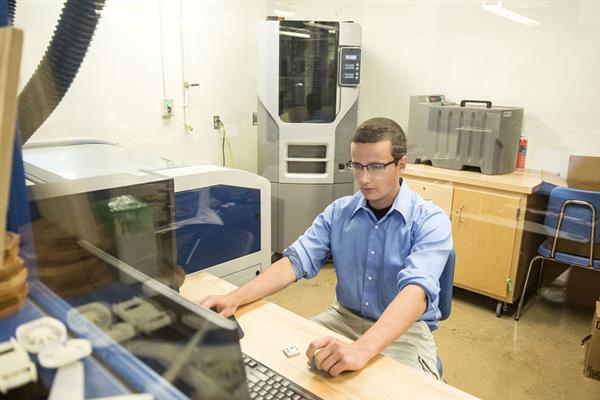These news articles hit my desk last week – both highlighting the ingenuity of high school students.
The first story is about a class that designed a school lockdown device which prevents the door from latching – a problem if the door is a fire door. I applaud their creativity, their passion, and the motivation behind their project, but it’s a bit concerning how easy it is for anyone to become an inventor and apply for patents without a full understanding of the codes that apply to their product. This is happening in garages all over America, and the products can hit the market quickly and effectively, which leads to schools purchasing them and code officials getting stuck in the middle.
The second story is about a high school student who is using a 3D printer to create replacement parts for a fraction of the cost of purchasing parts from the manufacturer. One of the products he created parts for is an automatic-closing device for a fire door. The parts have been discontinued, so a new unit would have to be purchased. As tempting as it is to print up the parts and save money, these products are UL listed and there could be huge liability for the school if the doors fail to close properly in a fire. An interesting conundrum.
Student uses 3D printer to save district money – Herald-Standard
 As for the fire doors, the broken part is discontinued; therefore, the district would need to spend $1,000 to replace the entire door-closing system, Masterbray said.
As for the fire doors, the broken part is discontinued; therefore, the district would need to spend $1,000 to replace the entire door-closing system, Masterbray said.
“If the fire alarm goes off, the doors are made to close automatically,” he said. “This is the part that slides in the door to close the door.”
For years, he said one door in particular didn’t work and was held open with a wedge. Teachers had to manually close the door.
So far, three fire doors have been repaired saving the district $3,000. In total, there are 10 fire doors that could benefit from the 3D-printed part in the future.
“It’s $1 worth of plastic saving $250, and $6 worth of plastic saving $1,000,” said teacher Chuck Smitley. “It’s crazy. It blows my mind.”
How do we help to ensure that these problem-solvers have the necessary information when considering a do-it-yourself approach?
You need to login or register to bookmark/favorite this content.





If we could get states and communities to adopt Fire Door Safety Inspections this would go along way to recognizing the issues related to these devices.
Where are the insurance company inspectors and why aren’t we hearing from them when it comes to the liability issue related to Lock Down Devices?
I don’t know where the insurance companies are on this. I’m sure we’ll hear from them when people start using the devices to commit crimes. 🙁
Dave C. – You took the words right out of my mouth!
Thank you 🙂
News item 1. Did she say replacing locks cost $50 per door? That’s quite the bargain!
News item 2. Any chance that 3D printing parts is a copyright violation?
I’m not sure about the copyright violation, but I agree with you on the lock price!
1st story:
Patent? Is there a patent pending on sheet magnets? You can make those with some scissors for about .20 each. They work the same and you can’t use either one on fire rated openings.
2nd story:
This is actually pretty cool although I get what you’re saying about liability. This particular part looks like a glide pivot for a track closer, so if he uses the right plastic and the closer works, its better than nothing. I’d say an operating door that latches is better that a broken door waiting for funding approval.
Door inspections becoming mandatory and enforced would resolve many of those funding decisions. If you can’t get AHJ’s approval for occupancy until all the (thorough) door inspections have passed there would be a lot more attention paid to good specs and good installations.
I agree – door inspections would solve a lot of problems!
I’m not sure what part is being made with the printer, but I’m sure it’s not UL approved.
I like the technology teaching and the district should be applauded for modern day vo-tech classes. But the lesson was short and did not go into codes etc.. I suspect 3D printers will be an issue across all the trades. So tonight I plan on writing the school and district and explain my concerns so they can update their lesson plans (married to an elementary teacher). I would suggest we all write so they get the idea. I also intend to thank them for a good program.